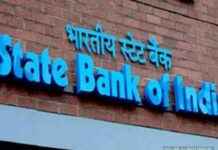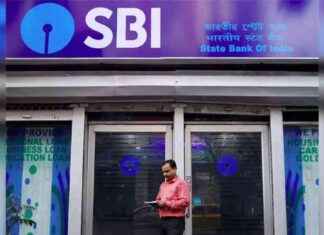MBBS in India: Unveil the Latest Fee Structure!
Navigating the path to becoming a doctor in India is no small feat, especially when it comes to understanding the financial investment involved. Aspiring medical students and their families often find themselves at a crossroads, trying to balance dreams with affordability. The latest fee structure for pursuing an MBBS (Bachelor of Medicine, Bachelor of Surgery) in India has just been released, bringing with it a mix of anticipation and anxiety. In this detailed article, we will unveil the updated fees across various medical colleges in India, both private and governmental. We’ll explore how these changes could impact your educational journey and offer insight into making informed decisions. Whether you are a student preparing to don the white coat or a parent supporting a future doctor, understanding these costs is crucial. Let’s dive into the numbers and navigate the financial landscape of becoming a healthcare professional in India.
Understanding the Basics of MBBS Fees in India
**Understanding the Basics of MBBS Fees in India**
Embarking on a career in medicine in India is a dream for many, but often the first hurdle is understanding the financial commitment involved. The Bachelor of Medicine, Bachelor of Surgery (MBBS) is one of the most sought-after and respected professional degrees in India. Given the intense competition and the varying fee structures across different colleges, gaining clarity on MBBS fees is crucial for prospective students and their families.
**What Factors Influence MBBS Fees in India?**
MBBS fees in India are influenced by several key factors including the type of institution (government or private), location, and the management quota. Government medical colleges are significantly subsidized by the government and therefore offer lower fees compared to private medical colleges. For example, annual fees for MBBS in government colleges can range from INR 10,000 to 50,000, whereas private colleges might charge anywhere between INR 2 lakh to 20 lakh per annum.
The location of the college also plays a role, as institutions in metropolitan cities might charge more due to higher operational costs compared to those in smaller cities or rural areas. Additionally, some seats are reserved under the management quota, where fees can be substantially higher, as these seats are typically set aside for students who are unable to secure admission through the general or reserved categories.
**How Does the Admission Process Affect MBBS Fees?**
The admission process to an MBBS program in India primarily occurs through entrance exams like the National Eligibility cum Entrance Test (NEET). Securing a seat through this competitive exam can lead to lower tuition fees, especially in government colleges. However, those opting for management quota seats should prepare for higher fees.
Moreover, the choice between a deemed university and a state-run college also affects the fee structure. Deemed universities, which are usually private, have their fee structure decided by the university itself, unlike state-run colleges where fees are more regulated.
**Are There Any Additional Costs Involved in Studying MBBS?**
Apart from tuition fees, prospective MBBS students should also budget for additional costs such as hostel fees, mess charges, laboratory fees, library fees, and other miscellaneous expenses. These can add a significant amount to the overall cost of education, especially in private colleges where such charges are typically higher.
For instance, hostel fees can range from INR 20,000 to 1 lakh per year depending on the college and the facilities provided. Similarly, mess charges can vary, and students might need to spend around INR 2,000 to 3,000 per month on food.
**What Are the Financial Aid Options Available for MBBS Students in India?**
Understanding the financial burden of MBBS education, several scholarships and loan facilities are available to aid students. Government scholarships like the National Scholarship Portal (NSP) or state-sponsored scholarships offer financial assistance based on merit or economic background. Banks and other financial institutions also provide education loans at reasonable interest
A Comparative Analysis of MBBS Fees Across Indian States
**MBBS in India: Unveil the Latest Fee Structure!**
Pursuing a Bachelor of Medicine, Bachelor of Surgery (MBBS) degree in India is a dream for many aspiring doctors. However, the cost of education can vary significantly across different states, influenced by various factors such as the type of institution (government or private) and geographical location. This comprehensive analysis aims to provide a detailed comparison of MBBS fees across Indian states, helping students and parents make informed decisions.
**Variation in Government and Private MBBS Fees**
**What Are the Typical Fees in Government Medical Colleges?**
Government medical colleges in India are known for their relatively lower fees compared to private institutions. The fees can range from as low as INR 5,000 to INR 50,000 per annum, depending on the state. For instance, AIIMS New Delhi, one of the top government medical institutes, charges around INR 1,628 annually for the MBBS program. In contrast, states like Karnataka and Tamil Nadu offer MBBS courses at government colleges for approximately INR 25,000 to INR 40,000 per year.
**How Much More Do Private Medical Colleges Charge?**
Private medical colleges, on the other hand, have a higher fee structure due to their self-financing model. The annual fees in private colleges can range from INR 2 lakh to over INR 20 lakh. For example, the Kasturba Medical College in Manipal charges about INR 14,40,000 per year. This substantial difference highlights the financial consideration students must undertake when choosing between government and private institutions.
**State-by-State Comparison of MBBS Fees**
**Which States Offer the Most Affordable MBBS Programs?**
Kerala, West Bengal, and Tamil Nadu are known for having some of the most affordable MBBS programs in government colleges. In Kerala, the Government Medical College in Thiruvananthapuram charges around INR 25,000 per year. Similarly, West Bengal and Tamil Nadu have government medical colleges where the annual fees are below INR 30,000.
**What Are the MBBS Fees in Northern Indian States?**
In the northern region, states like Uttar Pradesh and Punjab offer MBBS courses at varying fees. Government colleges in Uttar Pradesh charge about INR 36,000 per year, whereas private colleges can charge up to INR 12 lakh annually. Punjab also exhibits a similar trend with government colleges charging about INR 30,000 and private institutions going up to INR 10 lakh per year.
**Comparing MBBS Fees in Southern India**
Southern states such as Karnataka, Andhra Pradesh, and Telangana feature a mix of affordable and high-fee structures. Karnataka has a range of government colleges charging from INR 50,000 to 70,000 annually, while private colleges can go as high as INR 15 lakh per year
Government vs Private Medical Colleges: Fee Structures Explained
**MBBS in India: Unveil the Latest Fee Structure!**
Pursuing a Bachelor of Medicine and Bachelor of Surgery (MBBS) in India is a dream for many aspiring doctors. However, the choice between government and private medical colleges is a significant decision, primarily influenced by the fee structures. Understanding these differences is crucial for students and parents planning their educational and financial future.
**Comparing Fees: Government vs. Private Medical Colleges**
When it comes to MBBS studies, the cost of education can vary dramatically between government and private institutions. This variance in fee structure often reflects the differences in funding, infrastructure, and the subsidies that government colleges receive.
**What are the Typical Fees in Government Medical Colleges?**
Government medical colleges are heavily subsidized by the state and central government, making them much more affordable than their private counterparts. The annual tuition fees in government colleges can range from INR 5,000 to INR 50,000, a fraction of what is charged by private institutions. This fee often covers tuition but may exclude other expenses like hostel fees, mess charges, and miscellaneous costs, which could add another INR 20,000 to INR 30,000 annually.
**How Much More Expensive are Private Medical Colleges?**
Private medical colleges, on the other hand, operate without significant government subsidies, which leads to higher tuition fees. The annual fee for MBBS courses in private colleges can range from INR 2 lakh to over INR 20 lakh. This substantial fee difference makes private colleges less accessible to a broader segment of society, although these institutions often boast more modern facilities and resources.
**Assessing Value for Money: Is the Cost Justified?**
When considering the steep difference in fees, one might wonder about the value for money offered by both types of institutions.
**Do Government Medical Colleges Provide Quality Education at Lower Fees?**
Government medical colleges are not only more affordable but are also renowned for their quality of education and experienced faculty. They are often older institutions with a long history and a strong alumni network. Additionally, the competitive entry requirements ensure that students are highly motivated and talented, further enhancing the learning environment.
**Are the Amenities and Education in Private Colleges Worth the High Fees?**
Private medical colleges charge higher fees, which are often reflected in better infrastructure, newer facilities, and sometimes, a lower student-to-teacher ratio. These colleges might also offer more modern equipment and resources, which can enhance learning experiences. However, the return on investment can vary significantly between institutions, making it crucial for prospective students to research specific colleges thoroughly.
**Navigating Scholarships and Financial Aid**
The decision between government and private medical colleges may ultimately come down to financial viability for many students.
**What Financial Aid Options are Available in Government Colleges?**
In government medical colleges, students can often avail themselves of various scholarships and grants based on merit or economic status. States might offer additional incentives for students
The Impact of NEET on MBBS Fees in India
**MBBS in India: Unveil the Latest Fee Structure!**
The journey to becoming a doctor in India is a prestigious and sought-after path, primarily navigated through the National Eligibility cum Entrance Test (NEET). This rigorous exam not only sets the stage for medical aspirants’ careers but also plays a pivotal role in determining the cost structure of MBBS programs across India. Understanding how NEET impacts MBBS fees is crucial for students and parents planning for medical education. This comprehensive guide provides detailed insights into the current fee dynamics of MBBS courses influenced by NEET.
**How Has NEET Influenced MBBS Fee Structures in India?**
NEET, being the sole entrance test for medical education in India, significantly affects MBBS fees. With the implementation of NEET, there has been a noticeable shift towards a more standardized fee structure in government and private medical colleges. Government medical colleges usually have lower fees, but NEET has brought about a competitive atmosphere, leading to a surge in demand for these affordable seats. Consequently, private medical colleges have adjusted their fee structures, which, while higher than government institutions, are regulated under the guidelines set by the Medical Council of India (MCI) to prevent exorbitant fees.
The centralized admission process via NEET has led to increased transparency in admissions and fee structures. It ensures that merit is the primary criterion for admission, thereby influencing the overall competition and cost dynamics of pursuing an MBBS. Students and parents should stay informed about the periodic directives from the MCI regarding fee regulations to understand how changes in the NEET framework might impact future costs.
**What Are the Current Fee Ranges for MBBS Programs Post-NEET?**
Post-NEET, the MBBS fee structure in India varies widely between government and private colleges. Government colleges offer significantly lower fees, which can range from INR 10,000 to INR 50,000 per annum, making them highly desirable. On the other hand, private medical colleges, while adhering to fee caps set by regulatory bodies, can charge from INR 10 lakh to INR 25 lakh for the entire MBBS program.
The variation in fees also depends on the state and the management quota, including NRI (Non-Resident Indian) quotas, where fees can be substantially higher. For example, private medical colleges in Karnataka and Maharashtra might have different fee structures due to state-specific regulations. Aspiring medical students must research and understand the detailed fee breakdown of their target institutions, including hidden costs like hostel fees, laboratory charges, and other miscellaneous expenses.
**How to Navigate Financial Planning for MBBS in Light of NEET?**
Navigating financial planning for an MBBS degree in India post-NEET requires careful consideration and strategic planning. Potential medical students should start by identifying their preferred medical colleges and understanding their fee structures. Scholarships, grants, and education loans are vital components of financial planning for MBBS students. Several government and
How to Budget for Your MBBS Education in India
**MBBS in India: Unveil the Latest Fee Structure!**
Pursuing an MBBS (Bachelor of Medicine and Bachelor of Surgery) in India is a dream for many aspiring doctors. However, financing this dream can often seem daunting due to the varying fee structures and additional expenses involved. This article provides a comprehensive guide on how to effectively budget for your MBBS education in India, ensuring you can focus on your studies without financial stress.
**Understanding MBBS Fee Structures in India**
The cost of studying MBBS in India can vary significantly depending on several factors such as the type of institution (government or private), location, and additional expenses like hostel fees and study materials. Government medical colleges are substantially cheaper than private medical colleges. As of the latest data, the annual fees in government colleges can range from INR 10,000 to INR 50,000, whereas private colleges may charge anywhere between INR 2,00,000 to INR 22,00,000 per annum.
To navigate through these differences, it is crucial to research and compare the fee structures of various colleges. Official college websites, educational forums, and consulting with current students and alumni can provide insights into not only the tuition fees but also hidden costs that might not be immediately apparent.
**Planning and Saving for MBBS Expenses**
Once you have a general idea of the costs involved, the next step is budget planning. Start by assessing your current financial situation — this includes savings, possible educational loans, scholarships, and family support. Scholarships can significantly reduce the financial burden, so it’s advisable to apply for as many as applicable.
For managing day-to-day expenses and unforeseen costs, creating a monthly budget is essential. Include accommodation, food, transportation, books, equipment, and personal expenses. Tools like budgeting apps or spreadsheets can help keep track of expenses and adjust as necessary.
**Exploring Financing Options for MBBS Students**
Educational loans are a common way to finance MBBS studies in India. Many banks and financial institutions offer loans at competitive interest rates specifically designed for medical students. It is important to compare different loan options, taking into account the interest rates, repayment terms, and the moratorium period.
Apart from loans, consider part-time job opportunities if permissible. Some medical colleges allow students to engage in part-time work, which can help manage personal expenses without depending heavily on loans or family support.
**Cost-Effective Strategies While Studying MBBS**
Adopting cost-effective strategies can further ease the financial strain. Purchasing second-hand books, sharing accommodation, and utilizing student discounts can significantly reduce expenses. Additionally, participating in internships or hospital rotations that offer a stipend can also provide financial as well as professional benefits.
**Anticipating Additional Costs**
Apart from tuition fees and living expenses, MBBS students should also anticipate costs related to examinations, travel for internships or rotations, and attending conferences and seminars, which are integral parts
Fee Trends: Historical Data on MBBS Costs
**MBBS in India: Unveil the Latest Fee Structure!**
Introduction to MBBS Fee Trends in India
The cost of pursuing a Bachelor of Medicine, Bachelor of Surgery (MBBS) in India has been a topic of significant interest for aspiring medical students and their families. Understanding the historical data on MBBS costs is crucial to grasp how the fee structure has evolved and what factors contribute to the setting of these fees. This detailed examination serves as a guide to navigate the complex landscape of medical education financing in India.
Historical Evolution of MBBS Fees in India
MBBS programs in India are offered through various institutions, including government, private, and deemed universities. The fee structure varies significantly among these institutions, influenced by factors such as location, infrastructure, faculty, and the type of management.
**Government Medical Colleges:** Traditionally, government medical colleges have been the most affordable option for MBBS students. Over the decades, fees in these institutions have seen a gradual increase, primarily due to inflation and increased operational costs. However, they still remain substantially lower than their private counterparts. For instance, in the early 2000s, the annual fee for an MBBS program in a government college was approximately INR 10,000 to 20,000, which has ascended to about INR 50,000 to 70,000 in recent years.
**Private Medical Colleges:** The landscape of MBBS fees in private colleges shows a sharper increase. From charging around INR 2 to 5 lakhs in the early 2000s, many private colleges now charge between INR 10 to 25 lakhs per annum. This hike is attributed to the high demand for MBBS seats, substantial investment in infrastructure, and the cost of maintaining modern medical facilities and equipment.
**Deemed Universities:** Fees in deemed universities tend to be the highest, with some institutions charging up to INR 30 lakhs per annum. The autonomy in setting their curriculum and fee structure allows these universities to price their programs based on the perceived value and market demand.
How Has Government Regulation Influenced MBBS Fees?
Government policies play a pivotal role in shaping the fee structure of MBBS courses in India. The establishment of the National Medical Commission (NMC) and its predecessors was aimed, in part, at regulating fee structures in private and deemed universities to prevent exorbitant fee charges. The NMC has set guidelines to standardize fees in a bid to make medical education more accessible and prevent commercialization. However, the effectiveness of these regulations is often debated, with calls for more stringent enforcement to ensure that fee hikes are kept at reasonable levels.
What Drives the Cost of an MBBS Program?
Several factors contribute to the cost of an MBBS program in India:
1. **Infrastructure:** Establishing and maintaining state-of-the-art medical facilities and laboratories is costly.
2. **Faculty:** Attracting and retaining qualified faculty members, especially in specialized medical
Scholarships and Financial Aid for MBBS Students in India
**Scholarships and Financial Aid for MBBS Students in India**
Pursuing an MBBS in India is a dream for many, but the path is lined with financial hurdles that can be intimidating. Understanding the landscape of scholarships and financial aid available for MBBS students in India is crucial to making this dream a reality for many aspiring doctors. This comprehensive guide aims to shed light on various financial support systems that can help mitigate the high costs associated with medical education.
**Exploring Government Scholarships for MBBS Students**
The Indian government has initiated several scholarships to support economically weaker sections of society in obtaining medical education. For instance, the National Scholarship Portal (NSP) hosts a variety of scholarships under its umbrella, specifically targeting different categories of students, including those pursuing medicine.
**Q: What are some prominent government scholarships available for MBBS students?**
A few significant scholarships include:
– **Central Sector Scheme of Scholarship for College and University Students** by the Ministry of Human Resource Development, which is aimed at supporting the college education of meritorious students from low-income families.
– **Prime Minister’s Scholarship Scheme for Central Armed Police Forces and Assam Rifles**, which extends to the children of deceased or retired armed forces personnel.
**Merit-Based Scholarships from Private Foundations and Trusts**
Apart from government initiatives, numerous private entities offer scholarships based on academic merit and other criteria. These scholarships often cover a significant portion of educational expenses and sometimes even include stipends for living expenses.
**Q: Can you name some private scholarships for MBBS students in India?**
Notable examples include:
– **The J N Tata Endowment for the Higher Education of Indians** which provides loan scholarships to Indian students for higher studies, including MBBS.
– **HDFC Educational Crisis Scholarship Support** that assists students affected by personal or family crises to continue their education.
**Institution-Specific Scholarships and Financial Aid Programs**
Many medical colleges in India also offer their own scholarships or financial aid programs to assist students. These are often funded by alumni donations, endowments, or the institutions’ own resources.
**Q: How do students apply for institution-specific scholarships?**
Students should inquire directly at the medical institution during the admission process. Each college typically has a financial aid office that manages scholarships and grants.
**Loan Facilities for MBBS Students**
For those who may not qualify for scholarships or need additional funds, educational loans are a viable option. Banks in India offer special educational loans for students pursuing professional courses like MBBS, with reasonable interest rates and repayment plans.
**Q: What should students know about educational loans for MBBS?**
When considering an educational loan, students should compare offers from multiple banks to find the best interest rates and terms. Additionally, some banks provide lower interest rates for female students or offer a moratorium period during which the repayment is not required.
**State-Sponsored Scholarships and Grants**
Several state governments in India have their own scholarship schemes
Decoding the Fee Structure of Top MBBS Colleges in India
**Decoding the Fee Structure of Top MBBS Colleges in India**
Embarking on the journey to become a doctor in India is an aspiration for many, yet the path is intertwined with various challenges, one of which is understanding the fee structure of medical education. In India, the cost of studying MBBS can vary significantly based on several factors including the type of institution (government or private) and geographical location. This comprehensive guide aims to decode the fee structure of top MBBS colleges in India, providing prospective students and their families with a clear understanding of what to expect financially.
**Understanding the Fee Range in Government and Private Colleges**
Government medical colleges in India are highly subsidized, making them the most affordable option for MBBS students. The fees in these colleges can range from as low as INR 10,000 to INR 50,000 per annum. However, gaining admission into these colleges is extremely competitive due to their limited number of seats and low fees.
On the other hand, private medical colleges have a much higher fee structure. The annual fee can range from INR 10 lakhs to over INR 25 lakhs. These colleges tend to have more seats available and are sometimes considered by those who may not secure a place in a government institution.
**Top MBBS Colleges and Their Fee Structures**
When considering the top MBBS colleges in India, it’s important to look at specific examples to understand the fee variances:
1. **All India Institute of Medical Sciences (AIIMS)** – As a premier institute, AIIMS charges nominal fees of about INR 1,628 per annum, excluding hostel and other miscellaneous fees.
2. **Christian Medical College (CMC), Vellore** – The fees here are approximately INR 40,000 per annum, which is quite reasonable considering the college’s reputation.
3. **Armed Forces Medical College (AFMC), Pune** – This institution charges a subsidized fee of about INR 31,870 per annum for MBBS students who also have to serve in the armed forces for a minimum stipulated period after graduation.
**Additional Costs Beyond Tuition Fees**
While tuition fees make up a significant part of the expenses associated with studying MBBS in India, there are other costs to consider:
– **Hostel Fees**: Most medical colleges offer hostel facilities, and the charges can vary from INR 10,000 to INR 100,000 per annum depending on the college.
– **Laboratory Fees**: Given the practical nature of the course, lab fees can also add to the expenses.
– **Books and Supplies**: Medical books and supplies are costly, and students need to budget for these as well.
**Scholarships and Financial Aid Options**
Understanding the financial burden of medical education, many institutions and government bodies offer scholarships and financial aid to deserving students. For instance, the National Scholarship Portal (NSP) provides various scholarships under different schemes to help economically weaker sections
The Role of Management Quota in MBBS Fees
**MBBS in India: Unveil the Latest Fee Structure!**
The journey to becoming a doctor in India is arduous and competitive, with the MBBS (Bachelor of Medicine and Bachelor of Surgery) being one of the most sought-after courses. Among the various facets that aspirants must consider, understanding the fee structure, particularly the role of the management quota in determining MBBS fees, is crucial. This article provides an in-depth look at how management quotas influence fees and what this means for prospective students.
Understanding Management Quota in MBBS Admissions
Management quota is a term used to describe a certain number of seats in private and some government-aided medical colleges in India that are reserved for students who are willing to pay a higher fee. These seats are typically set aside for candidates who, despite having lower scores in entrance exams, are able to secure admission by paying higher tuition fees.
What is the Management Quota?
In the context of MBBS admissions, the management quota allows colleges to admit students directly, bypassing the more competitive merit-based processes. This quota is a significant aspect of the admissions process in private medical colleges and is also present in a few government-aided institutions.
How Does Management Quota Affect MBBS Fees?
The presence of a management quota can significantly inflate the cost of studying MBBS. While fees under the merit quota (for students entering through national or state-level entrance tests) might range from INR 10,000 to INR 7,50,000 annually, management quota fees can soar much higher. In some private colleges, management quota fees can range anywhere from INR 20 lakhs to over INR 1 crore for the entire course.
Exploring the Impact of Management Quota on MBBS Aspirants
The management quota system sparks a complex debate, impacting students and their families financially and emotionally. Here’s how:
Financial Implications for Students
The steep fees associated with management quota seats can be a significant barrier for many students, limiting access to medical education to those who can afford to pay high costs. This system raises questions about equity and inclusivity in medical education in India.
Quality of Education and Career Implications
There is an ongoing debate about whether students entering through management quotas receive the same level of education and training as their merit-based counterparts. Furthermore, the high cost of education under management quotas can lead to increased financial pressure on students to secure high-paying jobs post-graduation, potentially influencing career choices.
Key Considerations for Prospective MBBS Students
For students considering entering an MBBS program under a management quota, several factors need to be carefully evaluated:
Assessing the Return on Investment
Given the high fees, students must consider the potential return on investment. This includes evaluating the reputation of the college, the quality of education, and the career opportunities available post-graduation.
Exploring Financial Aids and Scholarships
Prospective students
State-wise MBBS Fee Breakdown
**MBBS in India: Unveil the Latest Fee Structure!**
Pursuing a career in medicine in India is a dream for many, but often, the decision heavily depends on the financial aspects of the education. Medical education in India, particularly the Bachelor of Medicine and Bachelor of Surgery (MBBS) program, varies significantly in cost across different states and types of institutions. This comprehensive guide will provide you with an up-to-date state-wise MBBS fee breakdown, helping you make an informed decision about where to pursue your medical studies.
**Overview of MBBS Fees in Government and Private Colleges**
Understanding the fee structure for MBBS courses in India requires distinguishing between government and private medical colleges. Generally, government institutions offer lower fees compared to their private counterparts, making them highly competitive.
**Government Medical Colleges:** The fees in government medical colleges are subsidized by the government, and thus, are significantly lower. Annually, the fee can range from INR 10,000 to INR 50,000. This fee structure makes it an attractive option for most students.
**Private Medical Colleges:** On the other hand, private medical colleges charge higher fees. The annual fee can range from INR 2,00,000 to INR 20,00,000, depending on the reputation and location of the institution.
**State-wise Breakdown of MBBS Fees**
**MBBS Fees in Maharashtra**
In Maharashtra, government medical colleges charge about INR 70,000 per year, while private institutions can charge up to INR 25,00,000 annually. The variance is due to factors like infrastructure, faculty, and the additional facilities provided by private colleges.
**MBBS Fees in Karnataka**
Karnataka is known for its numerous esteemed medical colleges. Government college fees range from INR 50,000 to INR 1,00,000 per year, whereas private colleges may charge between INR 1,00,000 to INR 15,00,000 annually.
**MBBS Fees in Tamil Nadu**
Tamil Nadu offers one of the lowest fee structures for MBBS in government colleges, with annual fees as low as INR 20,000. Private colleges in Tamil Nadu can charge anywhere from INR 2,00,000 to INR 22,00,000 per year.
**MBBS Fees in Uttar Pradesh**
In Uttar Pradesh, the fee for MBBS in government colleges can go up to INR 40,000 per year. Private colleges, however, can be quite expensive, with fees ranging from INR 10,00,000 to INR 30,00,000 annually.
**MBBS Fees in West Bengal**
West Bengal offers affordable MBBS education with government college fees around INR 10,000 to INR 30,000 per year. Private colleges charge approximately INR 3,00,000 to INR 18,
Navigating MBBS Fees for NRI Students
**Navigating MBBS Fees for NRI Students**
The journey to becoming a doctor in India is a prestigious path, and for Non-Resident Indian (NRI) students, understanding the nuances of the fee structure for a Bachelor of Medicine, Bachelor of Surgery (MBBS) degree is crucial. This comprehensive guide aims to provide a detailed look into the costs associated with pursuing an MBBS degree in India as an NRI student, exploring everything from tuition fees to hidden costs, ensuring you have all the necessary information to plan your education effectively.
**Understanding the MBBS Fee Structure for NRI Students**
For NRI students, the fee structure for MBBS courses in India can be significantly different from that for domestic students. Typically, medical colleges in India have a separate quota and a different fee structure for NRI candidates. The fees for NRI students are usually higher, reflecting the additional administrative efforts and the facilities provided.
**What are the average MBBS fees for NRI students?**
On average, the annual fee for NRI students can range anywhere from USD 20,000 to USD 60,000, depending on the prestige and location of the medical college. Some of the top medical institutes may charge towards the higher end of this spectrum, while mid-range colleges will have somewhat lower fees.
**Factors Influencing MBBS Fees for NRI Students**
Several factors can influence the fees for MBBS courses for NRI students in India. These include the type of institution (government or private), location, and the level of facilities provided. Understanding these factors can help you make a more informed decision when selecting a medical college.
**How do institution type and location affect MBBS fees?**
Government medical colleges generally charge lower fees compared to private medical colleges, but securing a seat in these institutions can be more challenging due to limited NRI quotas. On the other hand, private medical colleges, while more expensive, might offer easier admission processes and potentially better facilities or more modern equipment.
**Comparing MBBS Fees Across Different Indian States**
The fees for MBBS courses for NRI students can also vary significantly from one state to another. States with a higher cost of living, such as Maharashtra and Delhi, might have higher fee structures compared to states like Karnataka or Tamil Nadu, where the cost of living is relatively lower.
**Which Indian states offer the most affordable MBBS fees for NRI students?**
States like Karnataka, Andhra Pradesh, and Tamil Nadu are known for offering more affordable MBBS programs with fees that are on the lower end of the spectrum yet still provide quality education. These states also host a number of well-respected medical colleges that attract NRI students.
**Additional Costs Beyond Tuition Fees**
When planning for MBBS in India, NRI students must also consider additional costs beyond just tuition. These include accommodation, food, travel, books, and any other educational supplies. Additionally, there might be registration fees, exam fees, and
Essential Tips for Financing Your MBBS Degree
**MBBS in India: Unveil the Latest Fee Structure!**
Pursuing a Bachelor of Medicine and Bachelor of Surgery (MBBS) degree in India is a dream for many aspiring doctors. However, financing this dream can often seem daunting due to the considerable expenses involved. Understanding the fee structure and exploring effective financing options are crucial steps in planning your medical education. This article delves into essential tips for financing your MBBS degree, providing a comprehensive guide to help you manage your educational expenses efficiently.
**Understanding MBBS Fee Structure in India**
The cost of studying MBBS in India varies significantly between government and private medical colleges. Government colleges are considerably cheaper, with annual fees ranging from INR 10,000 to INR 50,000. In contrast, private colleges can charge anywhere between INR 2 lakh to over INR 20 lakh per annum. Additional expenses such as hostel fees, mess charges, and miscellaneous costs also add up, necessitating a robust financial plan.
When planning your finances, it’s important to consider the duration of the course, which is typically five and a half years, including a one-year mandatory internship. This long timeline means that not only the initial fees but also the incremental costs over years need to be accounted for.
**Scholarships and Grants**
One of the most effective ways to finance your MBBS degree is through scholarships and grants. Many government and private institutions offer scholarships based on merit and financial need. The National Scholarship Portal (NSP) is a one-stop solution facilitated by the Government of India where students can find and apply for various scholarships.
In addition to national scholarships, numerous state governments and private organizations also offer grants and scholarships to medical students. These financial aids can significantly reduce the burden of tuition fees and other educational expenses.
**Questions to Consider:**
– Have you explored all available scholarship options?
– Are there specific scholarships for students in your state or for those choosing a particular specialization?
**Education Loans for MBBS Students**
Education loans are a viable option for many students who do not qualify for scholarships or need additional financial assistance. Banks and financial institutions in India offer education loans at competitive interest rates, with repayment periods starting after the completion of the degree.
When applying for an education loan, it’s crucial to compare offers from multiple banks to find the best interest rates and repayment terms. Additionally, consider the loan coverage, as some banks provide complete financing that covers tuition fees, hostel charges, book costs, and other educational expenses.
**Questions to Consider:**
– What are the interest rates offered by different banks?
– Does the loan cover all aspects of your educational expenses, including living costs?
**Part-Time Job Opportunities**
While the rigorous MBBS curriculum might make it challenging to maintain a regular part-time job, there are opportunities for students to work part-time, especially during vacations. Tutoring, freelance medical writing, and internships are viable options that can provide financial relief and add valuable experience
Hidden Costs of Studying MBBS in India
**Hidden Costs of Studying MBBS in India**
Studying medicine in India is a dream for many due to the prestige of being a doctor and the promising career prospects that follow. However, the journey to earning an MBBS degree in India is not just academically challenging but also financially demanding. Beyond the basic tuition fees, there are several hidden costs that aspiring doctors need to be aware of. This article delves deep into these hidden expenses, providing a comprehensive guide to help students and their families plan better.
**Understanding Tuition Fees and Beyond**
When considering the cost of studying MBBS in India, the first thing that comes to mind is tuition fees. However, the financial commitment extends beyond just these fees. It’s crucial to understand that while tuition might cover basic teaching costs, numerous other expenses are often overlooked.
**What additional fees should students expect?**
Apart from tuition, MBBS students often have to pay for laboratory fees, library charges, and examination fees, which are seldom discussed upfront. Each of these can run into thousands of rupees per semester. Moreover, some colleges charge extra for registration with the Indian Medical Council and other professional bodies, which is a prerequisite for practicing medicine in India.
**Accommodation and Living Expenses**
Finding suitable accommodation is another significant challenge that adds to the cost. Most medical colleges have hostels, but not all students secure a spot due to limited capacity.
**How much do accommodation and living expenses cost for MBBS students?**
The cost of living in India varies widely depending on the city. Metropolitans like Delhi or Mumbai are significantly more expensive compared to smaller cities or towns. Hostel fees, if available, are generally lower than renting private accommodation. However, students living off-campus need to budget for food, utilities, and commuting expenses, which can add substantially to monthly expenses.
**Equipment and Study Materials**
MBBS curriculum demands extensive use of medical books, tools, and sometimes even personal medical equipment, which are rarely covered by tuition fees.
**What kind of equipment do MBBS students need to invest in?**
From the first year itself, students are expected to have a stethoscope, lab coats, and other personal medical equipment. Additionally, the cost of books and online resources for deeper understanding and preparation for exams can be quite high. These study materials and equipment can easily cost over INR 50,000 throughout the duration of the course.
**Travel and Practical Training**
Practical training and internships are integral parts of MBBS education, often involving travel to hospitals and clinics that may not be within the immediate vicinity of the college.
**How does travel impact the overall cost of studying MBBS?**
Travel expenses can vary greatly. Some students might need to travel frequently for practical training or internships, leading to significant monthly expenses. Moreover, those who study far from home incur additional costs visiting family during academic breaks.
**Miscellaneous Fees**
There are always miscellaneous costs
The Future of MBBS Fees: Predictions and Trends
**MBBS in India: Unveil the Latest Fee Structure!**
Introduction to MBBS Fee Trends in India
The pursuit of a Bachelor of Medicine and Bachelor of Surgery (MBBS) degree in India is a highly sought-after endeavor, yet it comes with significant financial considerations. Over recent years, the cost of obtaining an MBBS degree has seen various changes, influenced by factors such as governmental policies, private sector investments, and international collaborations. This article delves into the current landscape of MBBS fees in India, offering predictions on future trends and providing essential insights for prospective students and their families.
Analyzing Current MBBS Fee Structures in India
Before diving into future predictions, it is crucial to understand the present fee structures for MBBS courses across different types of institutions in India. Typically, MBBS fees vary widely between government and private colleges. Government colleges are substantially cheaper, often charging annual fees ranging from INR 10,000 to INR 50,000. In contrast, private colleges can charge anywhere from INR 10 lakhs to over INR 25 lakhs per annum.
The variation in fees is also influenced by the state in which the college is located, the college’s infrastructure, and its reputation. For example, prestigious institutions like the All India Institute of Medical Sciences (AIIMS) charge minimal fees due to substantial government subsidies, while newer private colleges may impose higher charges to cover their operational costs.
Predicting the Future of MBBS Fees in India
Given the rising demand for medical education and the finite number of seats available in government colleges, it is anticipated that MBBS fees, particularly in private colleges, will continue to rise. Several factors will likely influence this trend:
1. **Increased Demand for Medical Professionals**: As India’s population grows and ages, the need for medical professionals will continue to increase, driving up the demand for medical education.
2. **Upgradation of Facilities and Technology**: With rapid advancements in medical technology, colleges need to continually update their equipment and facilities, which could lead to higher fees.
3. **Regulatory Changes**: Government policies and regulations, such as fee caps and reservation policies, could also significantly impact MBBS fees.
Will Government Intervention Stabilize MBBS Fees?
The Indian government has occasionally stepped in to regulate MBBS fees, especially in private colleges, to keep medical education affordable. Various states have implemented fee caps and increased the number of seats in government colleges. However, the effectiveness of these measures in the long term is still a subject of debate among experts. The balance between maintaining educational quality and keeping education affordable is delicate and complex.
How Can Students Mitigate the Burden of Rising MBBS Fees?
Prospective MBBS students should consider several strategies to manage the financial burden of their education:
– **Scholarships and Grants**: Many institutions and external bodies offer scholarships based on merit or financial need.
– **Education Loans**: Banks and financial institutions provide education loans at concess
How to Choose an Affordable MBBS College in India
**MBBS in India: Unveil the Latest Fee Structure!**
Choosing an affordable MBBS college in India is a crucial decision for aspiring medical students and their families due to the significant financial and career implications. The cost of medical education can vary widely depending on various factors such as the type of institution (government or private), location, and facilities offered. This comprehensive guide aims to provide prospective students with essential information and strategies to select an affordable MBBS program in India without compromising on quality.
How to Identify Affordable MBBS Colleges in India?
When searching for affordable MBBS colleges in India, it’s important to start by understanding the different types of institutions available and their respective fee structures. Government medical colleges typically charge lower fees compared to private medical colleges. However, gaining admission into these government institutions is highly competitive.
Research Government MBBS Colleges
Begin by listing all government medical colleges in India. These institutions are subsidized by the government and usually have much lower tuition fees. Check the Medical Council of India’s (MCI) website for an updated list of recognized government medical colleges and their fee structures.
Consider State-Domicile Quotas
Many states in India offer a certain percentage of seats in their medical colleges at subsidized rates to students who are domiciles of that state. This can significantly reduce the cost of education for state residents. Research the domicile requirements and benefits offered by each state’s medical colleges.
Evaluate the Total Cost of Education
When considering affordability, look beyond just tuition fees. Include accommodation, food, transportation, books, and other living expenses. Some colleges may have higher tuition fees but lower living costs, which might be more economical in the long run.
What Are the Financial Aid Options for MBBS Students in India?
Understanding the financial aid options available can also help manage the costs associated with MBBS programs in India. Several scholarships, grants, and student loan programs are available that can help reduce the financial burden.
Scholarships and Grants
Check for scholarships offered by the colleges themselves, as well as external organizations and foundations. These scholarships can be merit-based, need-based, or specific to certain communities or regions.
Government and Private Student Loans
The Government of India and various private banks offer student loans at competitive interest rates for higher education. Explore these options to find the best terms and conditions that suit your financial situation.
Work-Study Programs
Some medical colleges offer work-study programs, where students can work on campus in exchange for a fee waiver or stipend. These programs not only help cover education costs but also provide valuable work experience.
Navigating Admission and Fee Regulations
Admission to MBBS programs in India is regulated through the National Eligibility cum Entrance Test (NEET). Scoring well in NEET is essential to secure a seat in an affordable government college.
Stay Updated on Fee Regulations
The Indian government and various state governments occasionally update the fee structures for MBBS programs to make medical education more accessible. Stay
In conclusion, understanding the fee structure for MBBS in India is crucial for aspiring medical students and their families. As we’ve seen, fees can vary widely depending on whether the institution is government-run or private, with costs ranging from a few thousand rupees per year to several lakhs. Additionally, the introduction of NEET as a standardized entrance test has brought a level of uniformity to the admissions process, impacting fee structures as well. Students need to consider not only the tuition fees but also additional expenses such as hostel fees, mess charges, and other miscellaneous costs. With this detailed overview, students are better equipped to make informed decisions based on their financial capabilities and academic aspirations. Aspiring medical professionals should thoroughly research and plan their finances to embark on this noble and demanding career path, ensuring a sound investment in their future in the medical field.






















